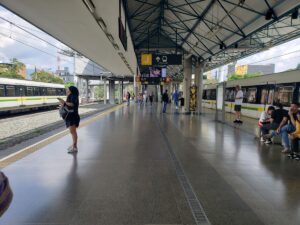Today we planned to go on a tour of Comuna 13, a district of Medellin that has experienced so much pain in the past and is now moving towards regeneration. It has only been in the last 20 years that things have begun to change. Not long ago the community was one of the poorest and most violent communities in Medellin. Originally, the people who moved to the hillsides around Medellin were displaced people, and the city of Medellin never recognized them as citizens. They were provided no services—no schools, roads, water, or electricity—and to this day there are no roads on the side of the mountain. The are just houses stacked one upon the other. In the past, the people here had to deal with the narcotics cartel of Pablo Escobar. After he was killed in 1993, they were terrorized by guerrillas. In an effort to combat the guerrillas, the government supported a paramilitary group, which only continued the violence. Alejandro, our tour guide, was born in 1996 and at the age of 6 (in 2002) he remembers the paramilitary coming in with huge guns, helicopters, and hundreds of soldiers. Supposedly they were sent to kill guerrillas, but in actual fact they gunned down people indiscriminately (some who may have been guerrillas). The paramilitary effort was backed by the United States and the world applauded their “success”. Alejandro’s uncle was killed by them, as were two of his cousins, ages 6 and 7. How could 6 and 7-year-old kids be ‘guerrillas’? Alejandro shared more about the many bodies of the dead that were never surrendered to the families (although it was promised that they would be delivered within 24 hours) and how, to this day, mothers carry pictures of their slain family members in cards around their necks.
But Alejandro also talked about transformation. In 2005 Mayor Sergio Fajardo started an initiative to change things in crime ridden neighbourhoods such as Comuna 13 through education and culture. Within 6 years (2005 to 2011) the city built library parks (10 of them) and lots of schools. Alejandro, who is from the neighbourhood, said that education changed his life from what it might have been. In 2009 (and completed in 2012) the city of Medellin built escalators up the side of the mountain in order for people to more easily travel to and from work, etc. After studying the problem of how to make the community more accessible without demolishing many homes, the government settled on an idea (borrowed from Asia) and built numerous long escalators up the mountainside.
Alejandro said that through art, music, and dance, the community was transitioning and away from its violent past and has been given a voice. Over the last 10 or so years, the changes, particularly the many beautiful murals, have attracted thousands of tourists; people come to visit Comuna 13 and see the rejuvenation of this area. Alejandro was passionate about telling the world about the transformation of Comuna13; he invited all of us to tell our friends and neighbours back home that Medellin, once the most dangerous city in the world, is that no longer.
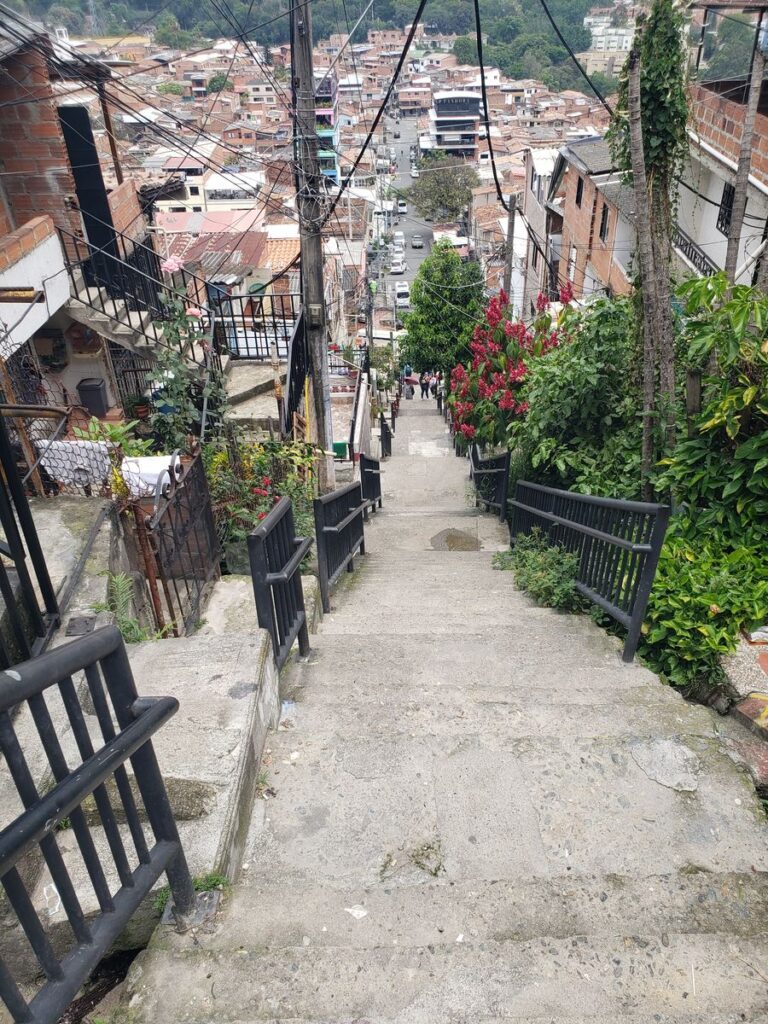
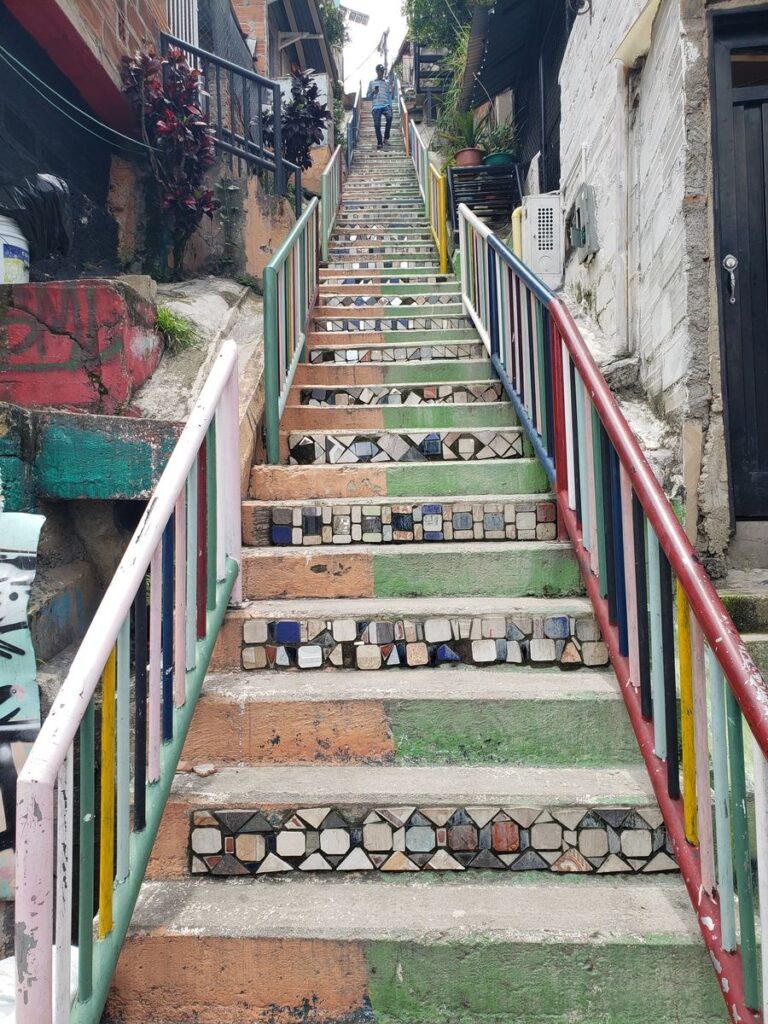
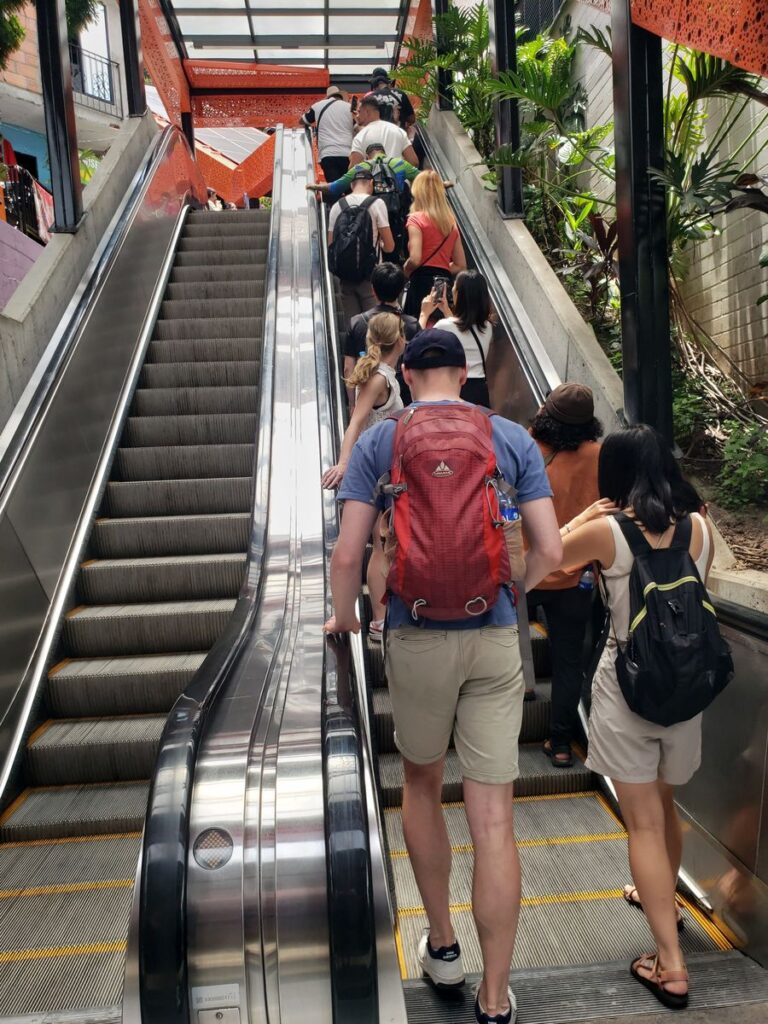


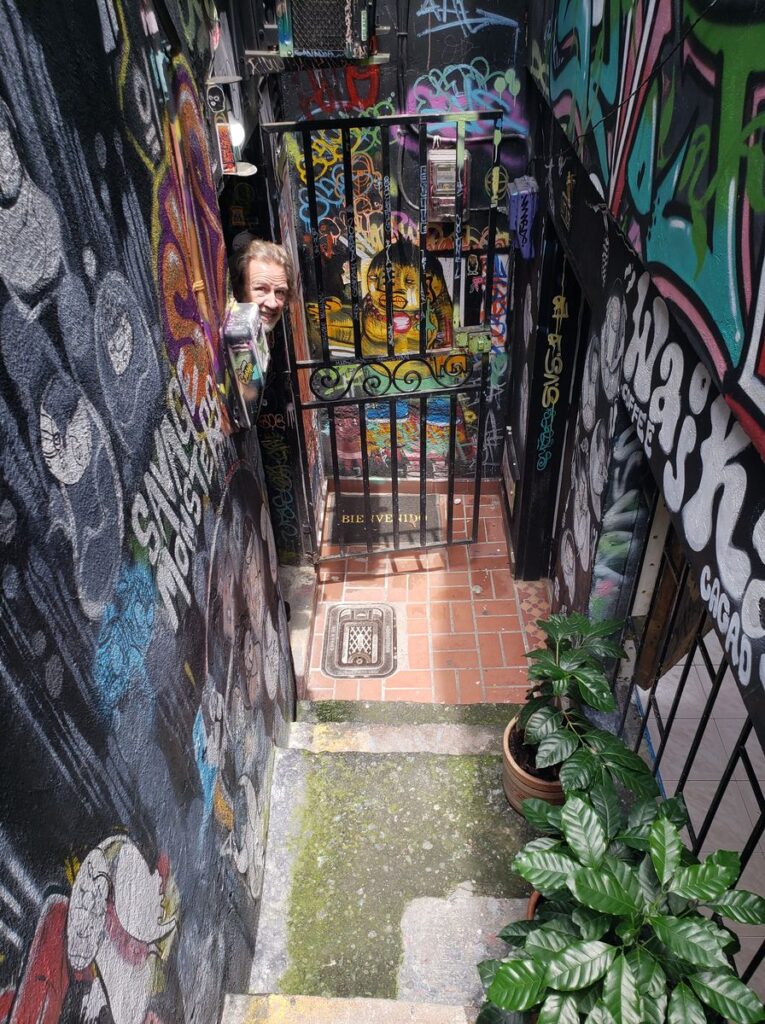
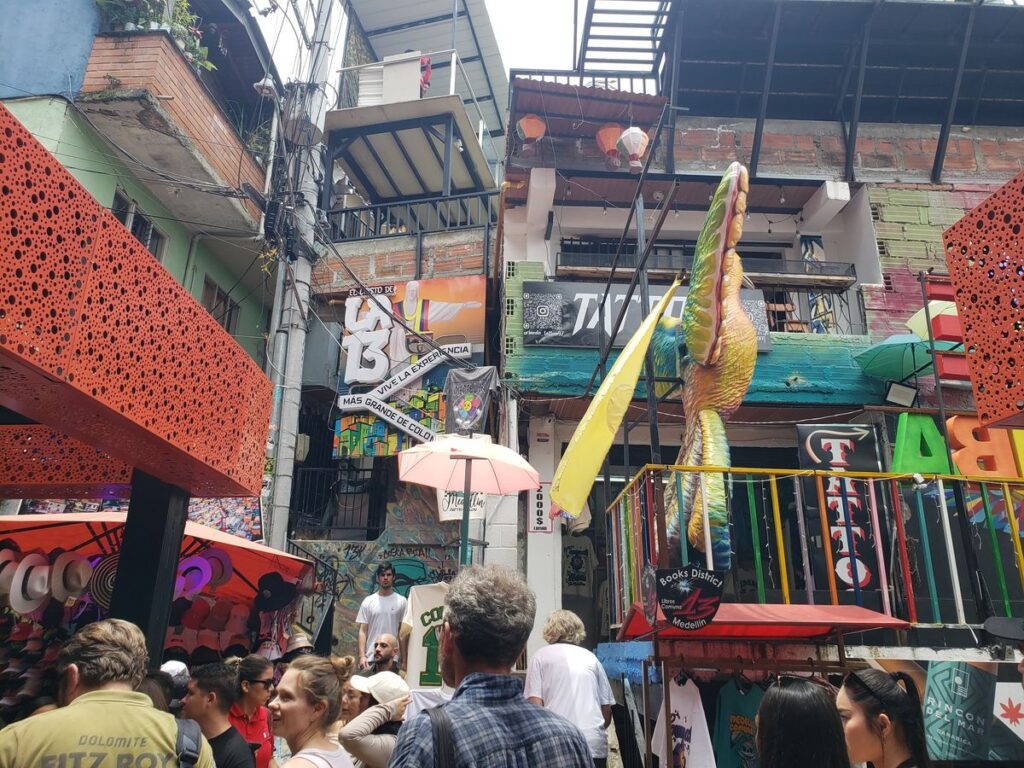
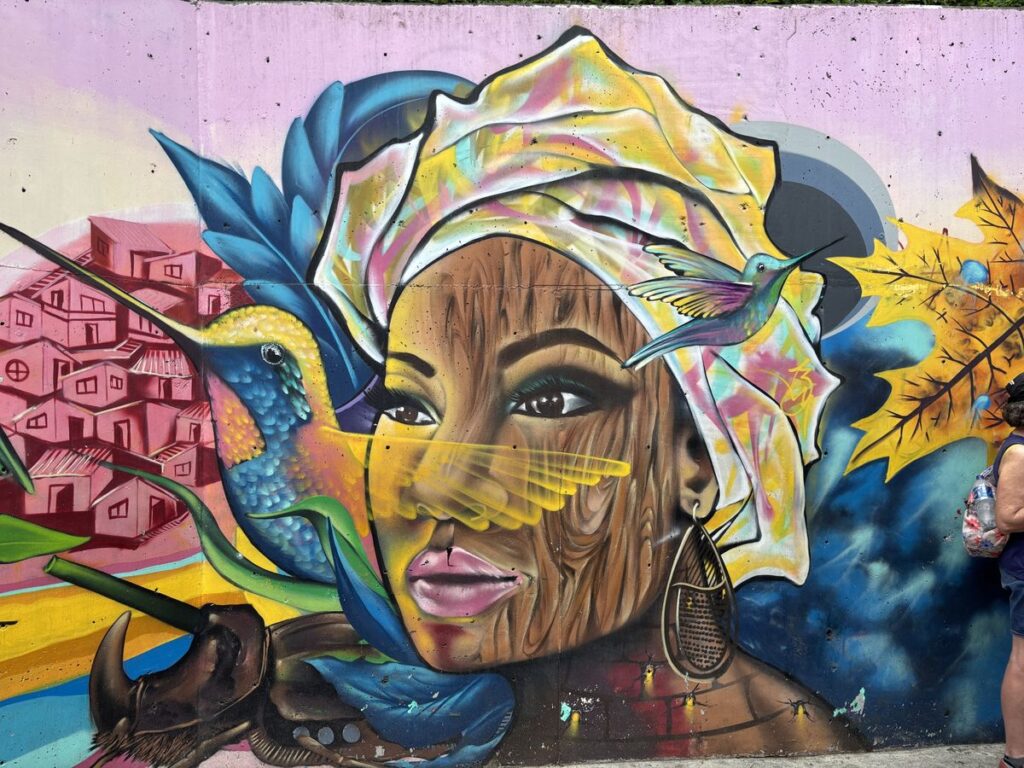
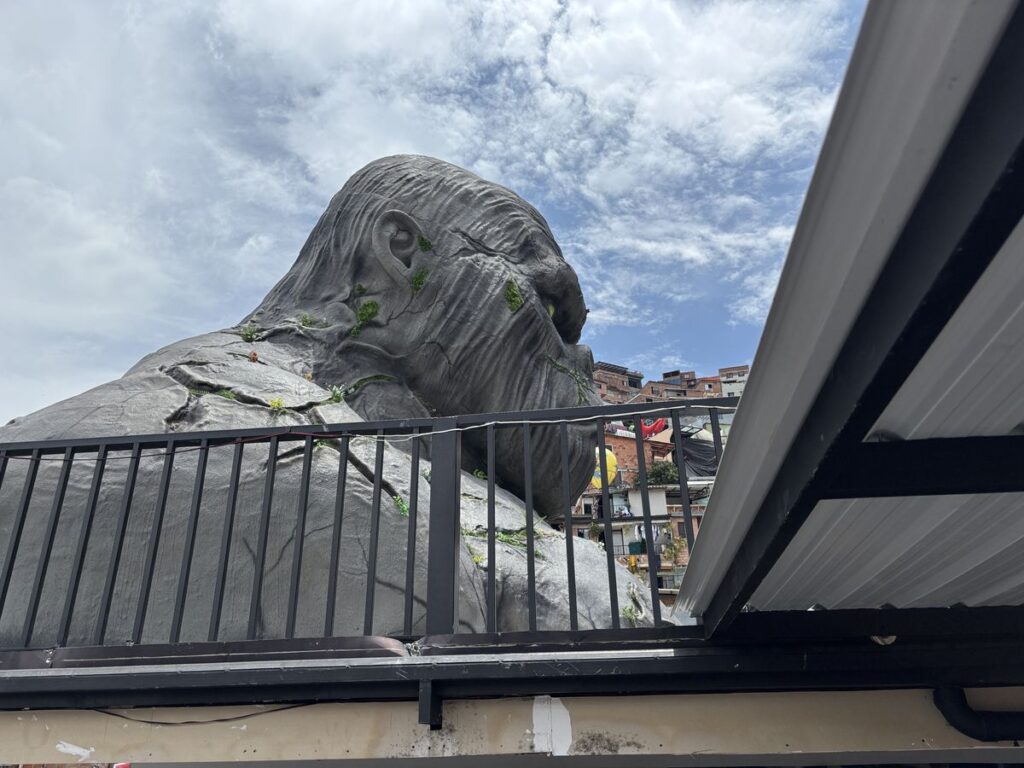
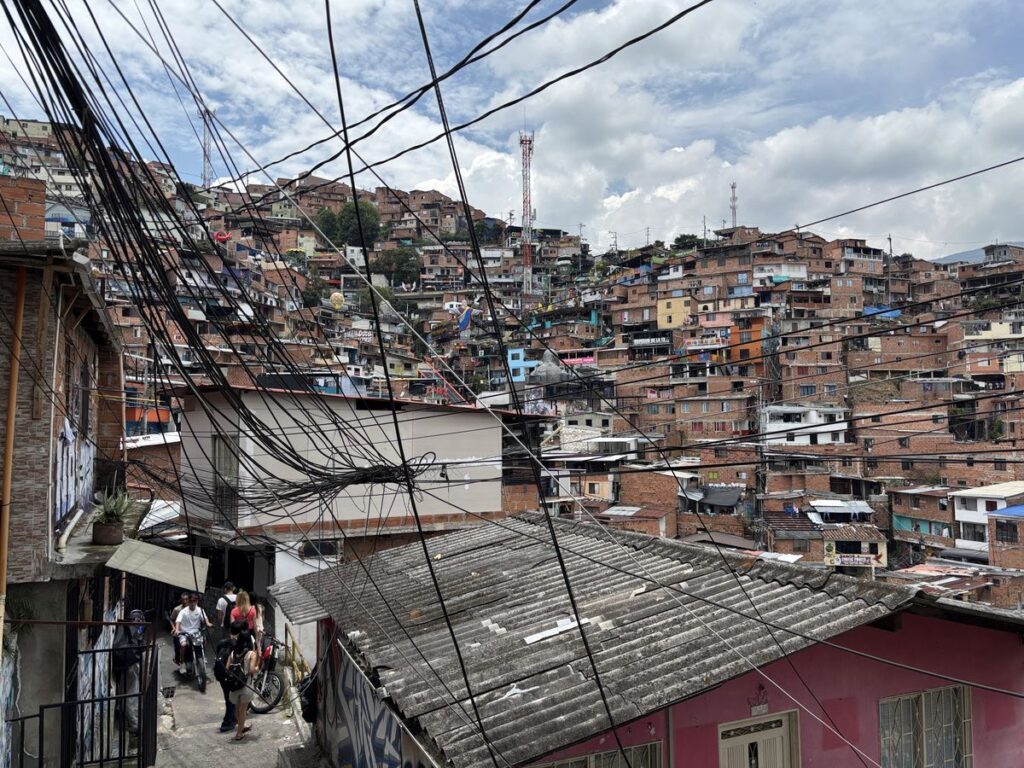
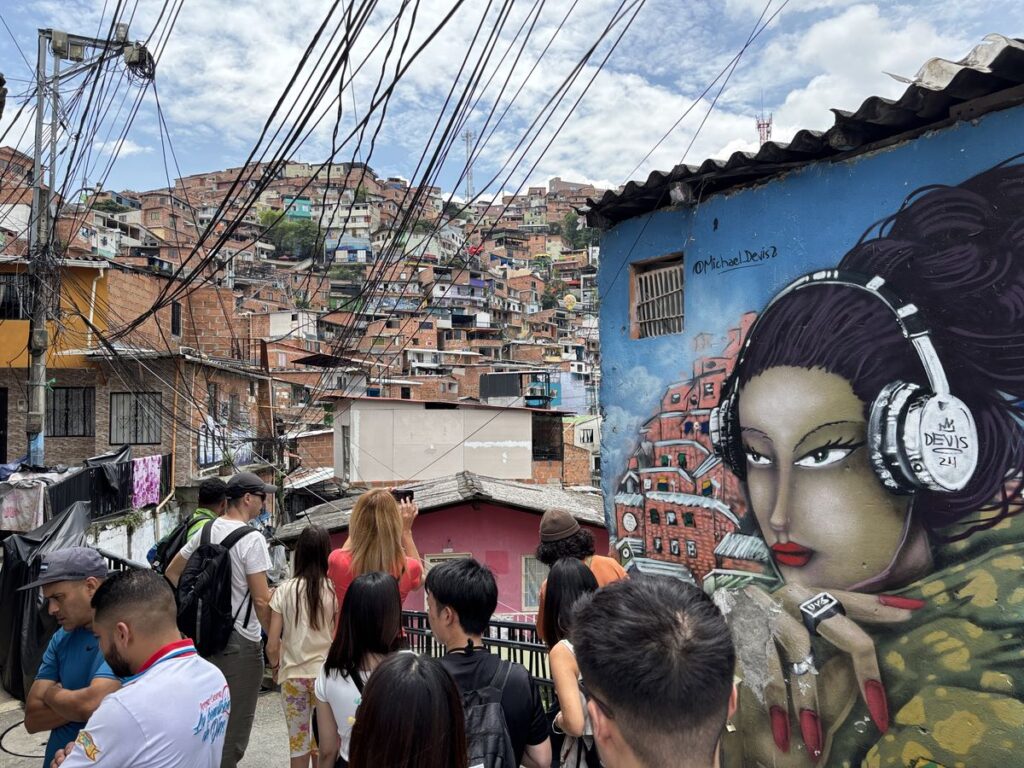
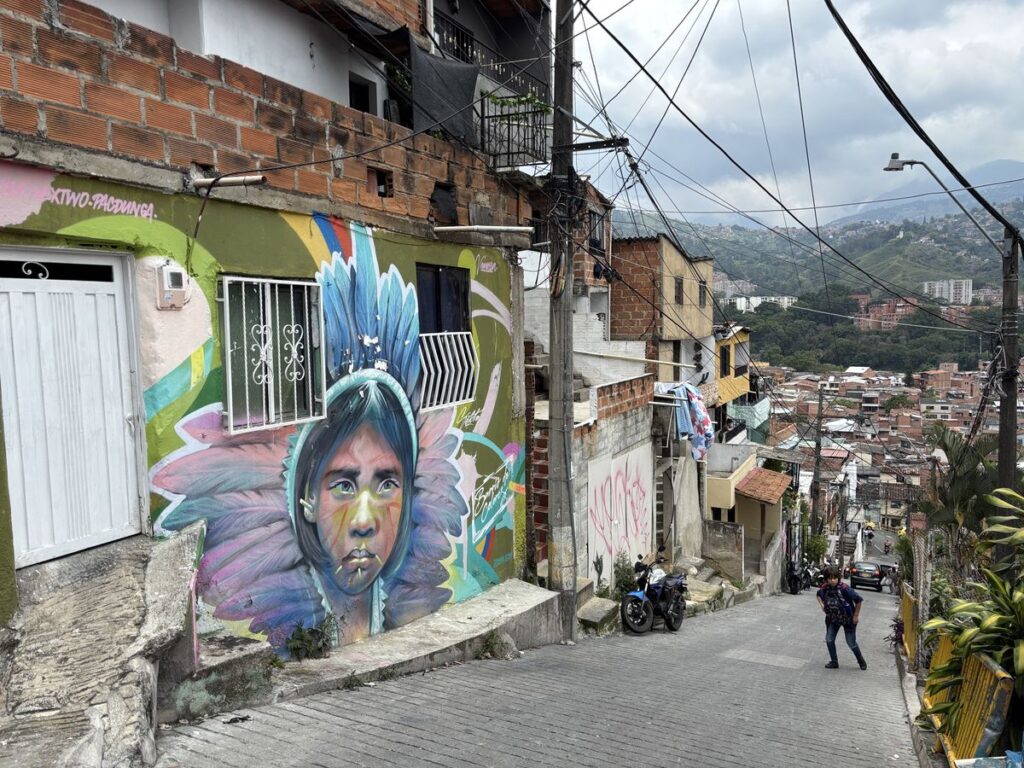
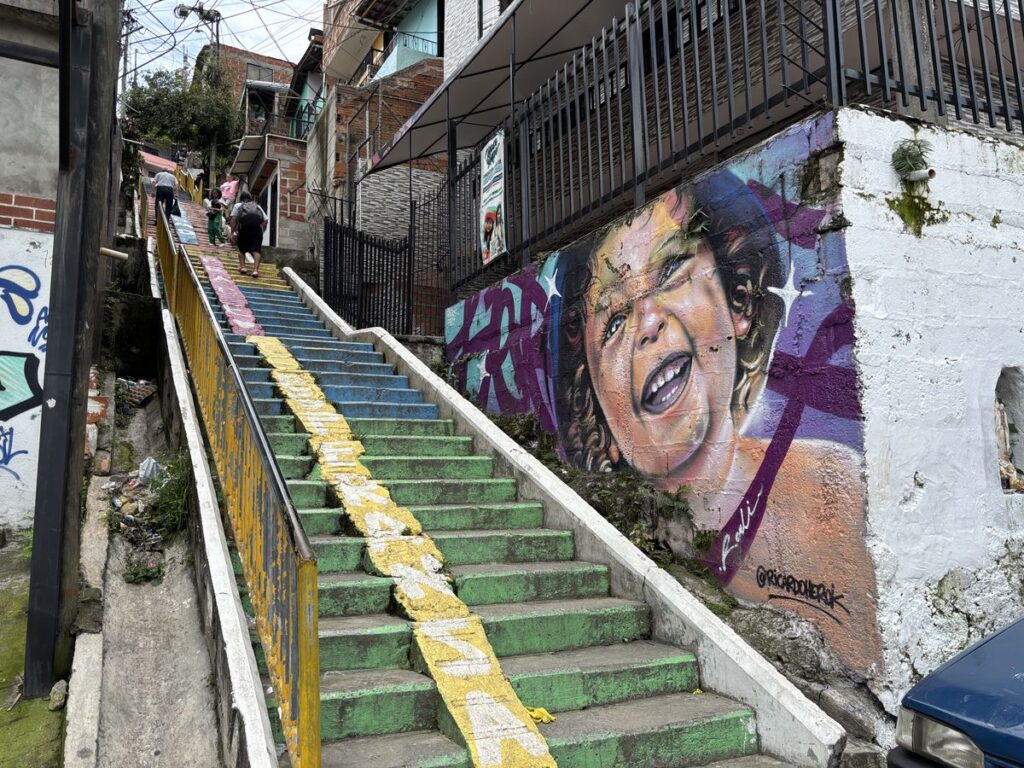
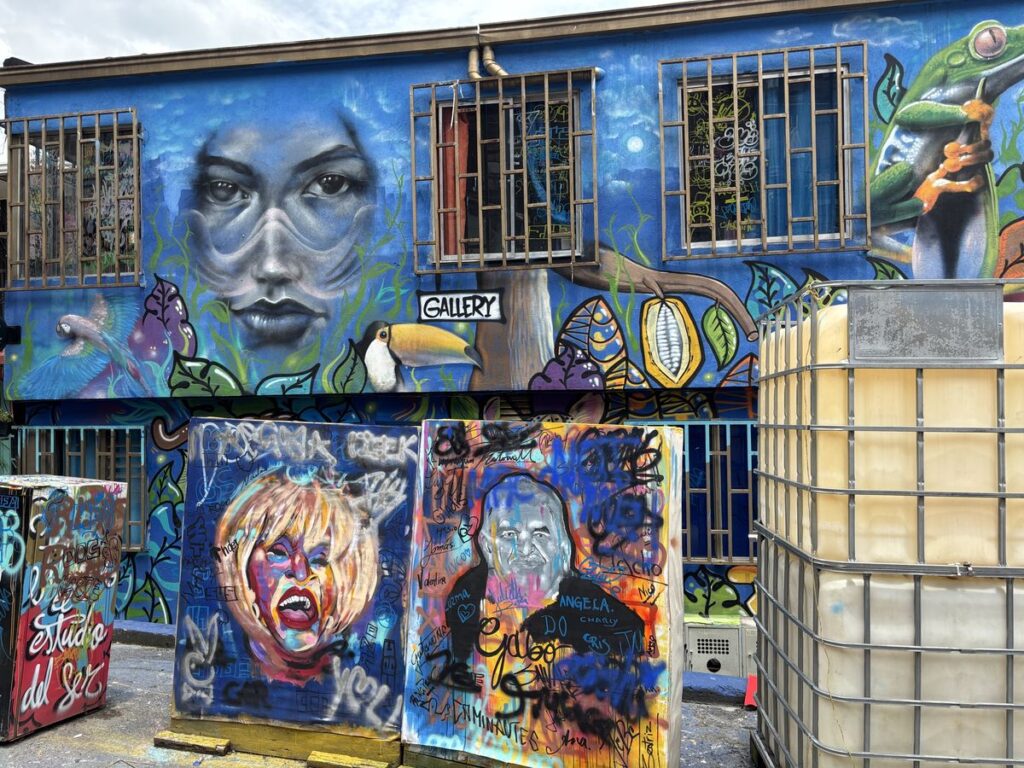
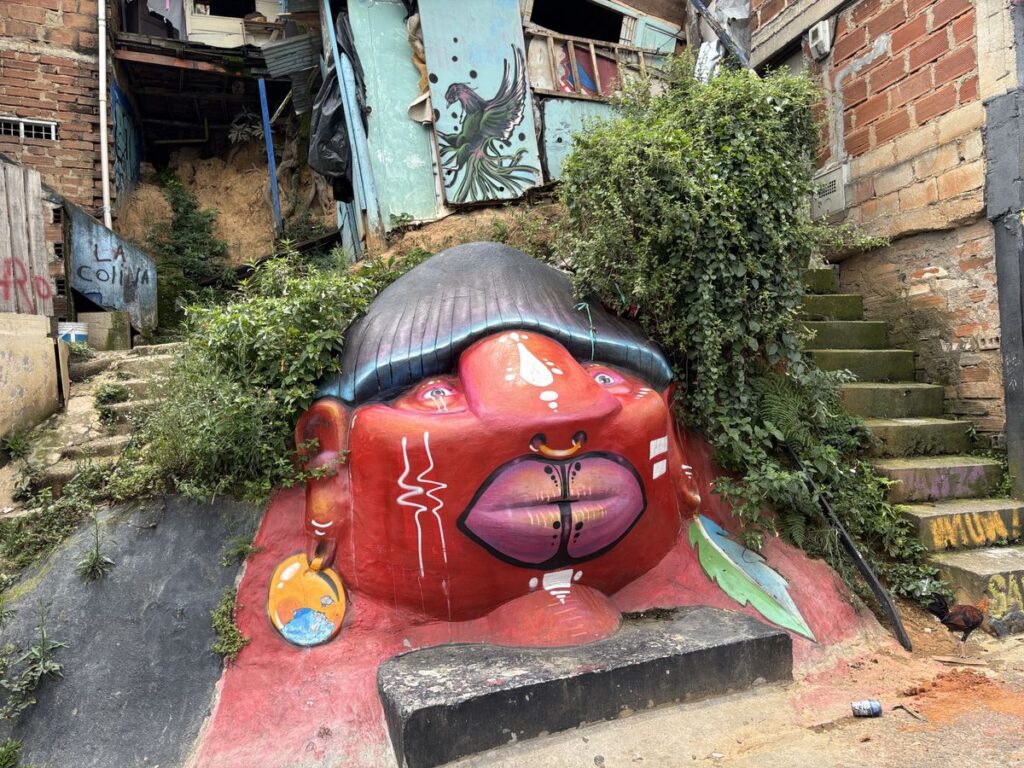

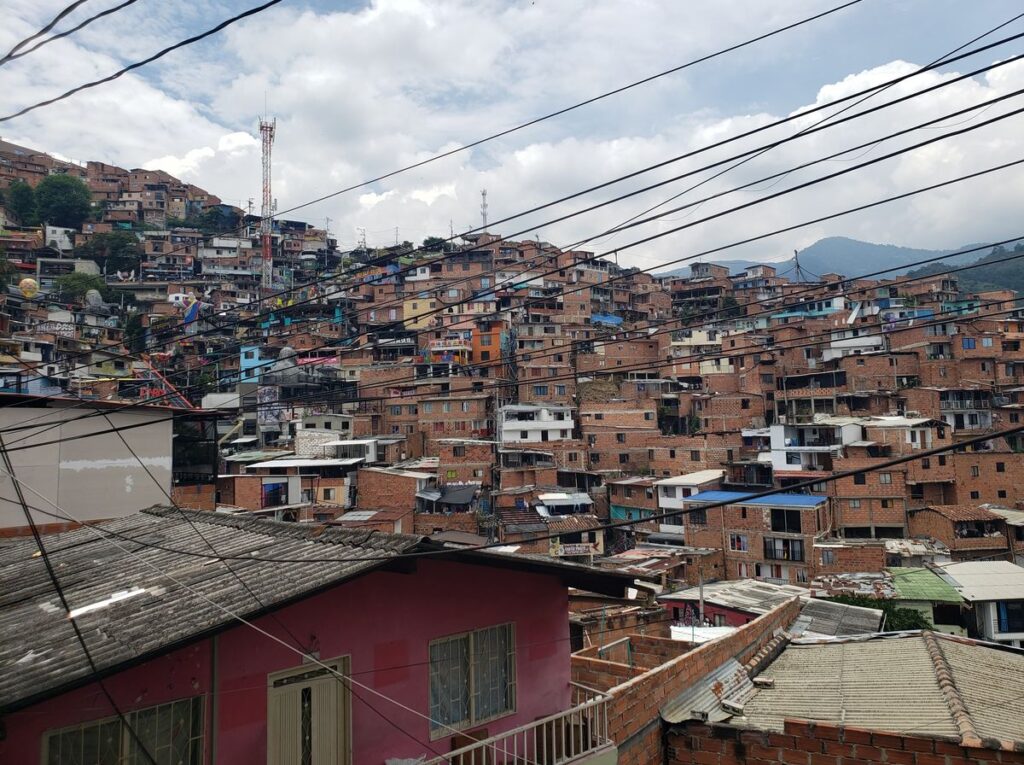
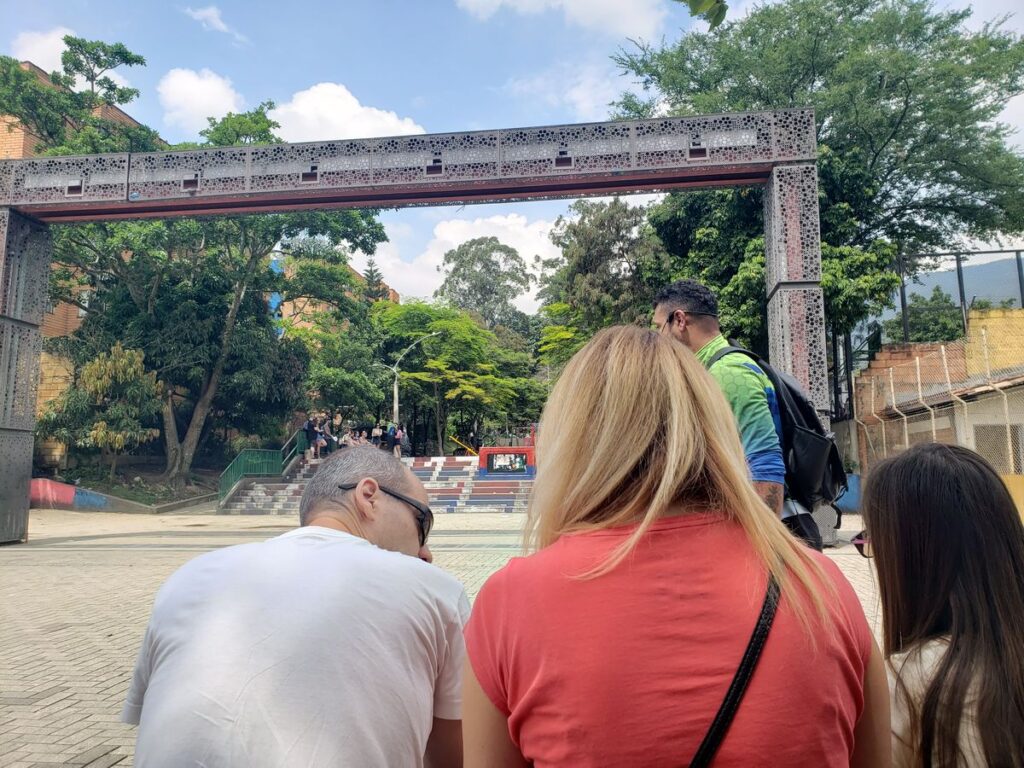

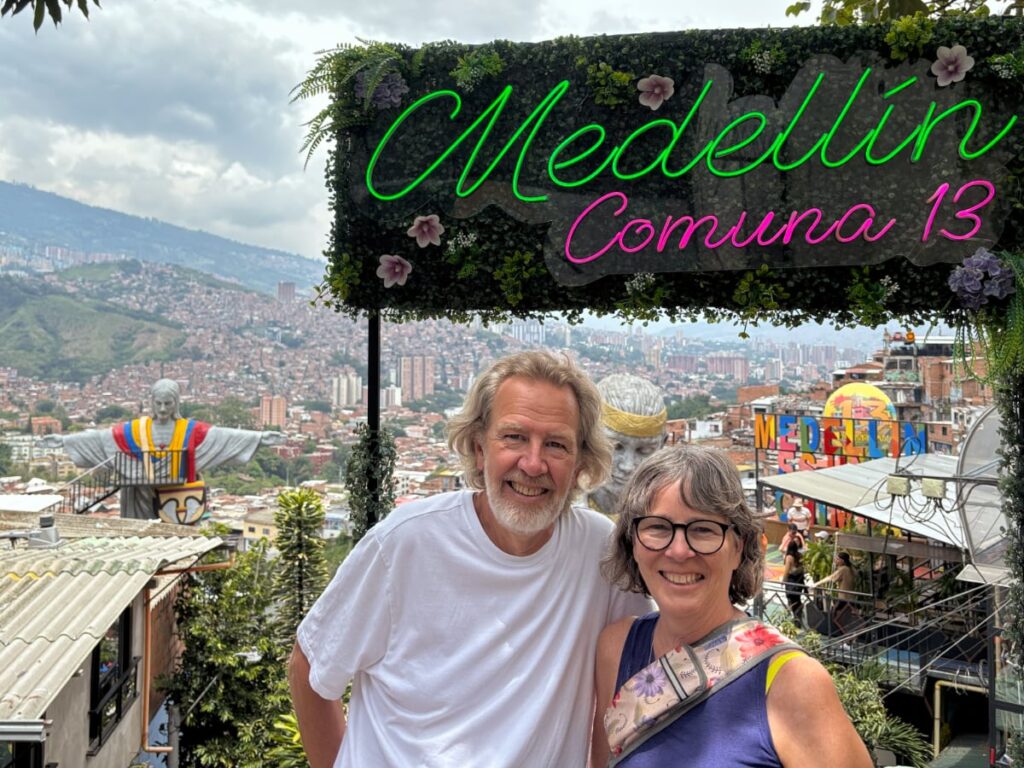
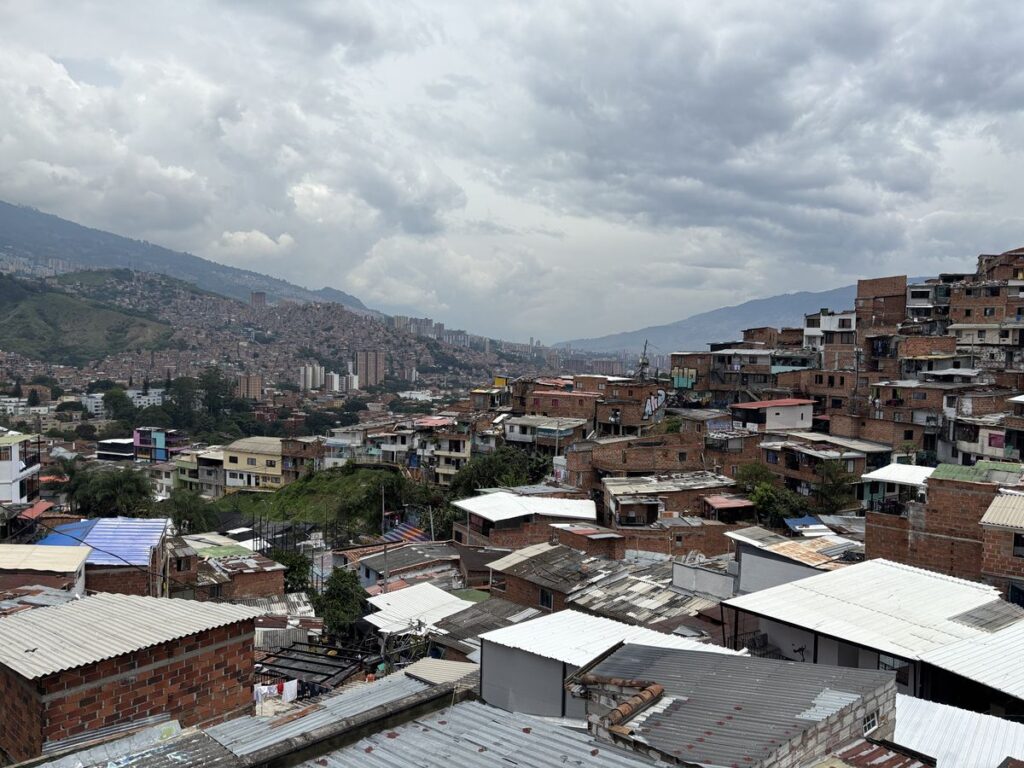
On the way home we decided to take the metro as our first tour guide Juli had said that it was a “must do” in Medellin. She said that it was a huge object of pride for the people here, as one of the signs of the change that has happened in the city. And just like she described, it was pristine. No garbage, no graffiti, and the people were quiet and well-mannered. Quite something in this country where often the music blares loudly, the people interact enthusiastically, and the garbage is plentiful.
